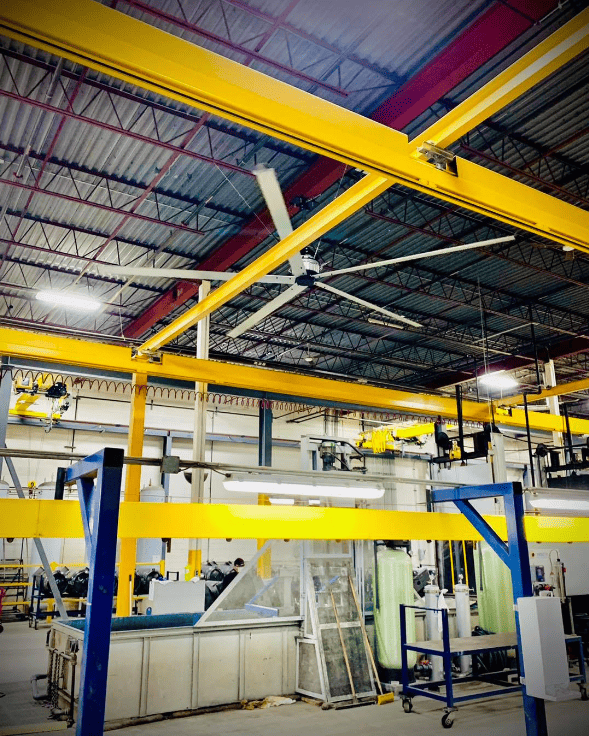
Cubic feet per minute, or CFM, is a measure that people get quite hooked on when it comes to using fans and airflow to keep things cool. It’s comparable to the “golden metric” that everyone believes defines a great fan. However, placing so much emphasis on CFM alone might not be the best approach. Let’s take a closer look at why Air Velocity Profile (AVP) could actually be the real champion in the battle for effective cooling solutions.
Understanding CFM and Its Limitations
CFM is a measure of the volume of air moved by a fan within a minute. It’s a straightforward metric, easy to quantify, and widely used in the industry. Traditionally, higher CFM values are equated with better cooling performance. However, this simplistic approach overlooks crucial factors that significantly impact cooling efficiency.
The fact that CFM ignores the way air expands out is one of its primary problems. A fan’s high CFM rating does not ensure that the air will cover the full cooling area or be distributed evenly. This may cause the temperature to fluctuate throughout the room, causing certain places to seem warmer and others to have very little air movement. These issues can really reduce how well your cooling system works.
Moreover, focusing solely on CFM for fans neglects the importance of air velocity and directionality, which are critical for efficient cooling, especially in large or complex environments. Without proper air velocity management, achieving desired cooling effects becomes a daunting challenge, even with high CFM-rated fans.
The Significance of Air Velocity Profile (AVP)
Air Velocity Profile (AVP) is a breakthrough metric that delves deeper into understanding airflow dynamics than ever before. While CFM solely focuses on volume, AVP goes beyond that by considering factors like speed, direction, and distribution of air movement.
Unlike traditional metrics, AVP offers a comprehensive perspective on airflow within a space. It gives us a detailed picture of how air behaves, enabling us to optimize cooling strategies effectively.
An effective AVP makes sure that cooling is dispersed equally across the room and that there are no stagnant regions where hot spots might form. AVP is essential for preserving comfort and guaranteeing that the room is sufficiently cooled in every area.
The Importance of AVP in Cooling
Since the AVP directly impacts the effectiveness of heat transmission, it is essential for cooling. The velocity of air is what allows cooling equipment, like air conditioners and cooling fans, to remove heat from a surface or an area. The distribution of air velocities inside a certain volume or region is referred to as the air velocity profile.
AVP doesn’t just stop at measuring air volume; it takes into consideration nuances like airspeed gradients, turbulence levels, and boundary layer effects. These factors play a crucial role in determining cooling efficiency.
By focusing on AVP, we’re able to customize cooling solutions to meet individual requirements, making sure every space gets just the right amount of airflow without squandering energy or materials. It’s a breakthrough in cooling technology that’s revolutionizing the way we keep things cool.
How AVP Trumps CFM When It Comes To Cooling Larger Spaces
In larger areas, making sure the temperature stays consistent is super important, and that’s where AVP comes in handy. Here’s why:
- No More Hot Spots: Bigger spaces can have parts that are hotter than others because of things like how well they’re insulated or how much sunlight they get. But with a good AVP, the air gets spread out evenly, stopping those hot spots from popping up in certain spots.
- Everyone’s Comfort Matters: Imagine working or hanging out in a place where the temperature keeps changing – not fun, right? AVP makes sure that doesn’t happen. It keeps the whole place feeling just right for everyone, which means fewer complaints and more focus on getting stuff done.
- Saving Energy: Think of AVP like a smart way to use energy. By making sure the air gets where it needs to go efficiently, cooling systems don’t have to work as hard. That means we’re not wasting energy cooling down places that don’t need it, which is good for the planet and our wallets.
Conclusion
When it comes to keeping things cool, we’re moving beyond just focusing on Cubic Feet per Minute to a smarter method called Air Velocity Profile. Here at Refresh Fans, we’re leading the charge in innovative technology. Join us in reimagining air movement for a cooler, more sustainable future.
Also Read: HOW TO COMPARE HVLS FAN SPECIFICATIONS